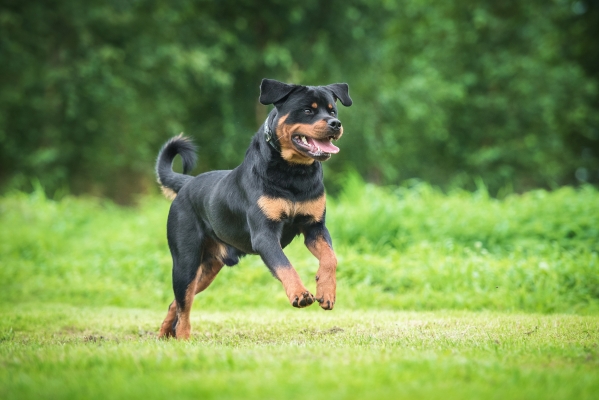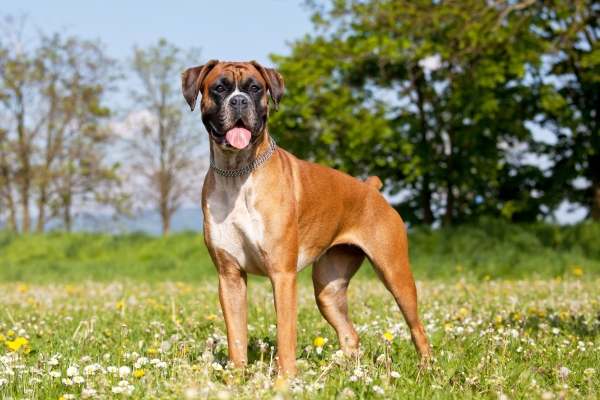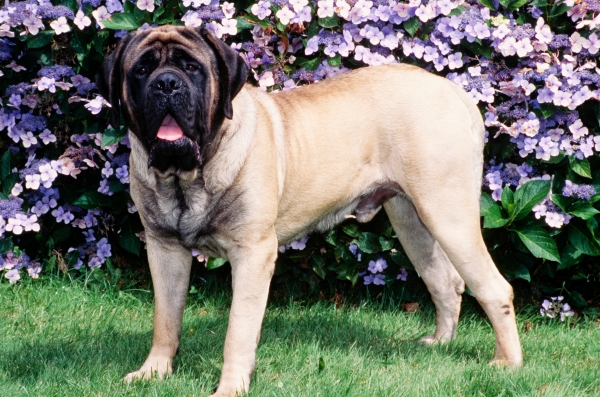Staffordshire Bull Terrier: Tudo Sobre o cão Staffie!
O Staffordshire Bull Terrier, ou Staffie para os mais próximos, é um cão de coração terno e lealdade inabalável. Atrás da sua aparência musculosa e robusta se esconde um companheiro afetuoso que, com uma educação adequada, se torna um membro insubstituível da família.
- 1 | História e origens do Staffordshire Bull Terrier
- 2 | Características físicas do Staffordshire Bull Terrier
- 3 | Temperamento do Staffordshire Bull Terrier
- 4 | Dieta do Staffordshire Bull Terrier
- 5 | Saúde e doenças do Staffordshire Bull Terrier
- 6 | Habitat e ambiente do Staffordshire Bull Terrier
- 7 | Reprodução e adoção do Staffordshire Bull Terrier
- Perguntas frequentes sobre o Staffie

1 | História e origens do Staffordshire Bull Terrier
As origens do Staffordshire Bull Terrier remontam à Inglaterra do século XIX. Este cão é fruto de cruzamentos entre o Bulldog inglês e diversos terriers, como o White Terrier e o Manchester Terrier.
Inicialmente criado para lutas de touros e de cães, o Staffie rapidamente demonstrou uma bravura e uma tenacidade excepcionais.
Os mineiros da "Black Country", região situada em torno de Birmingham e do condado de Staffordshire, eram os principais criadores desta raça. Eles apreciavam particularmente a capacidade do Staffie de caçar ratos, uma qualidade que levou à organização de "lutas de ratos" onde os cães tinham que matar o maior número de ratos em um tempo determinado.
Em 1835, o Parlamento inglês proibiu essas lutas sangrentas, obrigando os criadores a focarem nas qualidades de cão de companhia do Staffie.
Em 1935, o Kennel Club britânico oficialmente reconheceu o Staffordshire Bull Terrier como uma raça distinta, destacando seus traços de bravura, inteligência e afeição pelos humanos, em especial pelas crianças.
Hoje, o Staffordshire Bull Terrier é um dos cães mais populares na Grã-Bretanha e começa a ganhar popularidade em outros países.
Sua reputação de cão leal, afetuoso e protetor faz dele um excelente companheiro para famílias experientes em lidar com cães.
Ficha de identidade do Staffordshire Bull Terrier
- Nome científico: Canis lupus familiaris ;
- Grupo e seções FCI: Grupo 3, Terriers ;
- Filo: Vertebrados ;
- Classe: Mamíferos ;
- Ordem: Carnívoros ;
- Família: Canídeos ;
- Espécie: Canis lupus ;
- Cor da pelagem: Vermelho, fulvo, branco, preto ou azul com ou sem branco, tigrado em todas as tonalidades ou com branco ;
- Altura do macho: 35-40 cm ;
- Altura da fêmea: 33-38 cm ;
- Peso do macho: 12-17 kg ;
- Peso da fêmea: 11-15 kg.
2 | Características físicas do Staffordshire Bull Terrier
O Staffordshire Bull Terrier é um cão de físico impressionante, combinando força e agilidade. Sua aparência robusta é um reflexo de sua força interior e de seu caráter determinado.
- Seu pelo: O Staffie possui um pelo curto, liso e denso. Este tipo de pelagem requer pouca manutenção, uma simples escovação semanal é suficiente para manter seu brilho e limpeza.
-
Sua cor: A pelagem do Staffordshire Bull Terrier pode variar entre várias cores, incluindo vermelho, fulvo, branco, preto ou azul, com ou sem branco. Ele também pode ser tigrado em todas as nuances, às vezes combinado com branco.
Sua cabeça: A cabeça do Staffie é larga e curta, com um stop pronunciado. Seu focinho é sempre preto, e suas mandíbulas são poderosas, exibindo dentes bem desenvolvidos.
Suas orelhas: As orelhas são de tamanho médio, nem muito grandes, nem pesadas. Geralmente são rosadas ou parcialmente erguidas, mas nunca devem estar totalmente eretas ou pendentes.
Seus olhos: Redondos e de tamanho médio, os olhos do Staffordshire Bull Terrier são posicionados para permitir visão frontal. Sua cor é preferencialmente escura, embora possa variar de acordo com a cor da pelagem.
Seu corpo: Compacto e musculoso, o corpo do Staffie apresenta um peito largo e bem descido, além de um pescoço poderoso e curto que se alarga em direção aos ombros.
Sua cauda: A cauda é de comprimento médio, inserida e carregada baixa. Ela se afina em direção à ponta e não deve se enrolar.
3 | Temperamento do Staffordshire Bull Terrier
O Staffordshire Bull Terrier é um cão de temperamento equilibrado, tanto enérgico quanto afetuoso. Seu caráter único o torna um excelente companheiro para famílias experientes e amorosas.
Comportamento
O Staffie é conhecido pela sua natureza dócil e carinhosa. Ele é muito apegado a seus donos e muitas vezes se mostra protetor com eles.
É um cão brincalhão que gosta de momentos de cumplicidade e brincadeiras com seus entes queridos. No entanto, às vezes pode se mostrar dominante e precisa de um dono capaz de estabelecer limites claros.
Perfil
O Staffordshire Bull Terrier é um cão corajoso e destemido. Ele possui uma grande inteligência e uma forte vontade, o que às vezes pode torná-lo teimoso. Sua lealdade aos seus donos é inquestionável e ele está pronto para fazer qualquer coisa para protegê-los.
Ele também é muito sociável e geralmente se dá bem com outros animais, desde que seja bem socializado desde cedo.
Sensibilidade
O Staffie é um cão sensível que reage fortemente às emoções de seus donos. Ele precisa de muito amor e atenção para se desenvolver plenamente.
Uma educação positiva, baseada na recompensa e no reforço positivo, é essencial para desenvolver seu potencial e evitar qualquer comportamento agressivo.
Hábitos
Este cão enérgico precisa de muito exercício para canalizar sua energia excessiva. Longas caminhadas diárias, sessões de brincadeiras e atividades esportivas como agility são indispensáveis para o seu bem-estar físico e mental.
O Staffie também gosta de passar tempo dentro de casa com sua família, desfrutando de momentos de relaxamento e carinho.
Frequência de latidos
O Staffordshire Bull Terrier não é um cão que late excessivamente. Ele late principalmente para sinalizar um perigo ou para chamar a atenção de seus donos.
Uma boa educação desde cedo permite controlar seus latidos e evitar que se tornem problemáticos.
4 | Dieta do Staffordshire Bull Terrier
A dieta do Staffordshire Bull Terrier deve ser bem equilibrada para atender às suas necessidades energéticas e nutricionais. Uma alimentação de qualidade é essencial para garantir sua saúde e bem-estar ao longo da vida.
Rações, porções e quantidades
As rações são a base da alimentação do Staffie. Elas devem ser de alta qualidade, ricas em proteínas animais e pobres em grãos. É recomendado dividir a porção diária em duas refeições para evitar problemas digestivos e garantir uma absorção ideal dos nutrientes.
A quantidade de alimento depende do peso, idade e nível de atividade do cão. Em geral, um Staffordshire Bull Terrier adulto consome entre 200 e 400 gramas de ração por dia.
Nutrição recomendada e necessidades energéticas
As necessidades nutricionais do Staffie variam de acordo com sua idade, peso e atividade física.
During growth, it is crucial to provide a diet rich in proteins to promote muscle and bone development. An adequate intake of calcium and phosphorus is also necessary for joint health.
For adult dogs, a balanced diet with a moderate fat content is recommended to maintain a healthy weight and prevent obesity.
Staffordshire Bull Terriers are prone to skin issues, so it is advisable to include omega-3 and omega-6 fatty acids to maintain healthy skin and a shiny coat.
Dietary supplements for dogs can also be beneficial for the Staffie. Vitamins and minerals help strengthen the immune system, while chondroprotectors (glucosamine and chondroitin) support joint health, especially for older or very active dogs.
Feeding a Staffordshire Bull Terrier puppy
Staffordshire Bull Terrier puppies have specific nutritional needs for proper growth. It is recommended to feed them puppy-specific kibble, rich in proteins, fats, and essential minerals.
The daily ration should be divided into three to four meals until six months of age, then reduced to two meals per day.
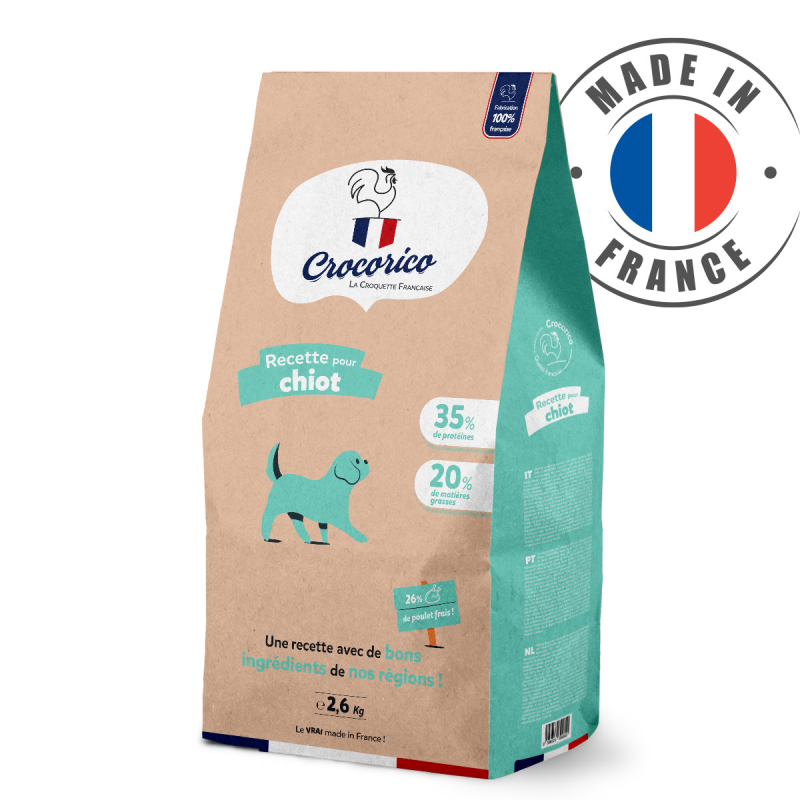
Feeding an adult Staffordshire Bull Terrier
For an adult Staffie, a balanced protein diet and moderate fat is ideal. High-quality dog food, free of artificial additives, is recommended.
It is important to monitor the dog's weight and adjust portions according to activity level to prevent obesity.
Feeding a senior Staffordshire Bull Terrier
Older Staffordshire Bull Terriers need a diet tailored to prevent age-related health issues.
Senior dog food, generally lower in calories but higher in fiber, helps maintain a healthy weight and facilitates digestion.
Dietary supplements for joints and vitamins to strengthen the immune system are also beneficial.
5 | Health and diseases of the Staffordshire Bull Terrier
The Staffordshire Bull Terrier is a robust dog, but like any breed, it may be prone to certain hereditary diseases and health issues. Good prevention and regular care are essential for ensuring a long and healthy life for your companion.
Common diseases of the breed
The Staffordshire Bull Terrier might be predisposed to several diseases:
Hip dysplasia: This joint malformation can cause pain and lameness. It is often hereditary and can be detected by x-rays.
Elbow dysplasia: Similar to hip dysplasia, this condition affects the elbows and can lead to lameness and pain.
Patellar luxation: The kneecap may move out of its normal position, causing pain and lameness. This condition may require surgical intervention.
Skin diseases: The Staffie can suffer from various skin conditions, such as atopic dermatitis and demodicosis (follicular mange). These conditions often require topical or systemic treatments.
Eye problems: Cataracts and other eye conditions can affect the Staffordshire Bull Terrier, potentially leading to vision loss.
Care and hygiene of the breed
The Staffordshire Bull Terrier is a relatively easy dog to maintain thanks to its short and smooth coat. Here are some tips for keeping your Staffie healthy:
Brushing: A weekly brushing is enough to remove dead hair and keep the coat clean and shiny.
Bath: Bathe your Staffie only when necessary, using a gentle dog shampoo.
Teeth: Brush your dog's teeth regularly to prevent tartar buildup and periodontal diseases. Use a toothbrush and toothpaste specially designed for dogs.
Ears: Clean your Staffie's ears each week to avoid infections. Use a cleaning solution for ears and soft cotton.
Eyes: Check and clean your dog's eyes regularly to prevent irritations and infections.
Nails: Trim your dog's nails every month to prevent them from breaking or deforming.
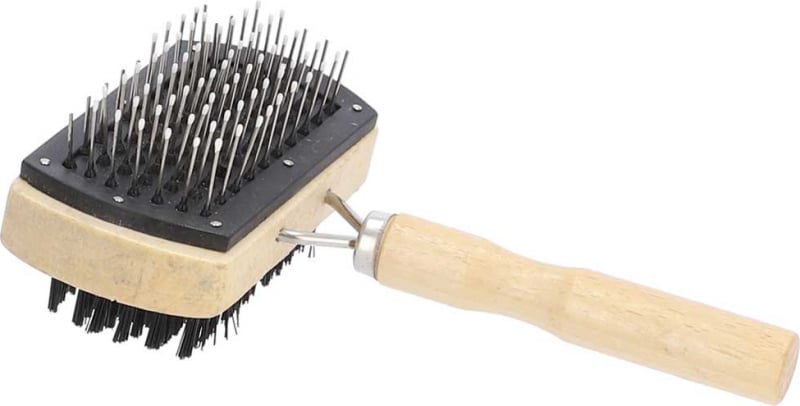
Spaying/neutering the breed
Spaying/neutering the Staffordshire Bull Terrier is an important decision that can have health and behavioral benefits for your dog.
Spaying females can prevent uterine infections and reduce the risk of breast cancers. For males, castration can decrease aggressive behaviors and reduce the risk of certain prostate diseases.
It is recommended to discuss with your veterinarian to determine the best time to spay/neuter your dog, usually between 6 months and 1 year of age.
6 | Habitat and environment of the Staffordshire Bull Terrier
The Staffordshire Bull Terrier is an adaptable dog that can live equally well in an apartment or a house, provided it receives enough exercise and attention. Its environment must be secure and stimulating to meet its physical and mental needs.
The Staffie thrives in a home where it can enjoy a constant human presence. It doesn't like being left alone for long periods and prefers to actively participate in family life. Its boundless energy requires space where it can spend, whether a fenced yard or regular walks in parks.
In an apartment, the Staffordshire Bull Terrier can adapt provided it receives frequent outings to stretch its legs and meet its exercise needs. Interactive play, dog toys, and training sessions are essential to avoid boredom and destructive behaviors.
The Staffie is known to be an excellent companion for children, thanks to its affectionate and protective nature. However, it's important to supervise interactions between the dog and young children to prevent accidents. Children should be educated to respect the dog and how to safely play with it.
The Staffordshire Bull Terrier can also coexist with other animals, provided it is well-socialized from an early age. Early socialization with other dogs and pets helps prevent aggressive behaviors and promotes harmonious cohabitation.
The ideal master for a Staffordshire Bull Terrier is an active, experienced, and patient person. This dog needs an owner capable of providing firm but kind education, based on positive reinforcement. Consistency and constancy in training are essential to establish a trustful and respectful relationship.
An owner who enjoys outdoor activities and dog sports will find in the Staffie an enthusiastic and motivated companion. Play sessions, daily walks, and activities like agility or canicross are perfect for meeting the energy needs of this dog.
7 | Reproduction and adoption of the Staffordshire Bull Terrier
Reproduction of the Staffordshire Bull Terrier must be approached responsibly and with ethical standards in mind. Knowledge of the reproductive aspects of this breed is essential for ensuring the health and well-being of the dogs and their future puppies.
Staffordshire Bull Terriers generally reach sexual maturity around 6 to 12 months, but it is recommended to wait until the female is at least 18 months old before breeding her for the first time. This ensures that she is physically and mentally ready for pregnancy and motherhood.
The gestation period for the Staffordshire Bull Terrier is about 63 days. A typical litter consists of 4 to 6 puppies. During pregnancy, the female should receive a balanced and nutrient-rich diet to support her health and that of the unborn puppies.
Regular veterinary visits are also essential to monitor the progress of the pregnancy and detect any potential complications. It is crucial to respect intervals between litters to preserve the female's health.
In general, it is recommended not to breed a female more than once a year and to allow her sufficient time to recover between each litter.
Adopting a Staffordshire Bull Terrier should be thoughtful and responsible. It is important to turn to professional and ethical breeders, who raise their dogs in optimal conditions and respect the standards of the breed. Serious breeders provide health certificates, pedigrees, and proof of genetic testing to ensure that puppies are free from hereditary diseases.
Shelters and animal protection associations are also options to consider when adopting a Staffordshire Bull Terrier. Dogs from shelters may require more patience and attention, but they can become just as wonderful companions with the right guidance.
Before adopting a Staffie, it is essential to ask the right questions about your ability to meet the specific needs of this breed. A Staffordshire Bull Terrier requires firm education, plenty of exercise, and constant attention. By adopting responsibly, you contribute to the well-being of the breed and ensure a harmonious and lasting relationship with your new companion.
In summary, the Staffordshire Bull Terrier is a dog with a unique and endearing character, combining strength and gentleness. Its loyalty and affection make it an ideal companion for experienced families capable of offering the firm and kind education it needs. With a balanced diet, regular care, and a stimulating environment, the Staffie will fully flourish and become an integral member of your family.
Frequently asked questions about the Staffie
Is the Staffie categorized?
If your Staffordshire Bull Terrier is registered with the LOF (French Book of Origins), it will not be classified into a specific category. However, for a non-LOF Staffie or a crossbreed, a morphological analysis performed by a veterinarian at 12 months will determine if it belongs to the first category.
Even if the breed is not officially recognized in France, a veterinarian may consider your dog as belonging to category 1 due to its kinship with the American Staffordshire Terrier and the Pitt Bull. This classification is based on a diagnose, which is a physical and not behavioral examination.
If the dog is classified in category 1, it does not mean that it is dangerous by nature; its behavior will depend on its education and socialization. However, it will have to wear a muzzle, and its owner will have to have a detention permit and a certificate of aptitude. In addition, the dog must be sterilized.
Where to adopt a Staffordshire Bull Terrier puppy?
To adopt a Staffordshire Bull Terrier puppy, it is recommended to turn to professional and ethical breeders. Make sure that the breeder respects the standards of the breed and provides health certificates, pedigrees, and proof of genetic tests.
Shelters and animal protection associations are also options to consider. Adopting a dog from a shelter may require more patience and attention, but these dogs can become wonderful companions with the right guidance.
Before adopting, inquire about local legislation concerning dog breeds considered potentially dangerous.
How much does a Staffordshire Bull Terrier dog cost?
The price of a Staffordshire Bull Terrier puppy varies depending on several factors, such as breeding, lineages, and certifications. Generally, the price of a puppy from a professional breeder ranges from 1,000 to 1,800 euros.
Dogs from shelters are often less expensive, but they may require more care and attention. It is important to consider the annual maintenance costs, which can vary between 1,000 and 1,100 euros, including food, veterinary care, and accessories.
How to distinguish a Staff dog from a Staffie?
The Staffordshire Bull Terrier, often called Staffie, is originally from England. It is the result of crossings between Bulldogs and various terriers, such as the White Terrier and the Manchester Terrier. The Staffie was primarily used in fights against bulls, bears, and donkeys until these practices were banned in 1835. Its current name was adopted in 1935 by the British Kennel Club, and since then, it has become a prized companion dog for its loyalty, affection, and hunting skills.
In contrast, the Staffordshire Terrier, often called Staff, has different origins. It was developed in Canada and the United States from crossings between two now-extinct breeds: the Bowlen Terrier and the Blue Paul Terrier. Although sharing a common heritage with the Staffie, the Staff evolved into a distinct breed, known for its sturdiness and protective character.



